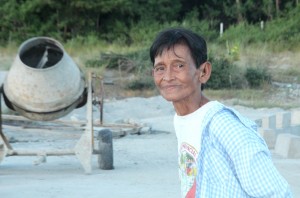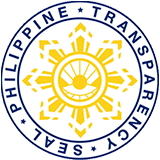
Cordillera Administrative Region- At first glance, Illuminada Aveňo is not any different from a typical woman you see in Patoc, Bucay, Abra. She wakes up early in the morning, drinks her coffee, walks around the community, calls and texts her friends and family and does backyard gardening. But once you’ll meet her, you’ll discover she is far from ordinary.
A retired elementary school teacher,Illuminada or Manang Lumen as she is fondly called is a dedicated community volunteer now.
In her barangay, she heads three different committees acting as a president of Senior Citizen Organization, leading the community as a member of Health and Sanitation Committee, and serving as chairperson of Barangay Sub-project Management Committee (BSPMC) of Kapit-bisig Laban saKahirapan-Comprehensive and Integrated Delivery of Social Services (Kalahi-CIDSS) Project of the Department of Social Welfare and Development (DSWD). Not bad for someone who is already in her early 70’s.
Proving that senior citizens are still productive members of the community, Manang Lumen started to become a bona fide community volunteer at the age of 65 after retiring as a teacher.But even while teaching, she was a volunteer adult teacher busily educating learners interested in reading, writing, and mathematics.
After her retirement, she became a member of the Barangay Health and Sanitation Committee where she leads the community on clean-up drives. Together with the members of the committee, she also assesses households who have no toilets and recommends them for toilet bowl assistance.
When the opportunity to become a part of their community’s development came, she gladly participated and was chosen as BSPMC Chairperson in 2012. “When staff from Kalahi-CIDSS came here, they helped us identify the most important need of our community and we unanimously agreed that it’s water system because potable water doesn’t reach our houses,” Manang Lumen said in vernacular.
The Kalahi-CIDSS Project is one of the core poverty reduction programs of the Philippines which aims to empower poor communities through the community-driven development (CDD) approach which gives communities the control over planning, decisions-making and implementing projects for local development.
In 2013, the barangay was able to complete a pump house and a tank and is still fully operational. The structure costs PhP 634, 364.00 financed by the Municipal Local Government (MLGU) of Bucay, Abra.
With te pump house and water tank as their kick-off, Manang Lumen and her fellow volunteers submitted another proposal for the construction of a footbridge across Patoc River, a tributary of Abra River which will connect their barangay to Barangay Dugong. The footbridge is supposed to provide an easier and faster access to the main road.
Unfortunately, they were not prioritized during the Municipal Inter-Barangay Forum (MIBF) in 2013 as the budgetary requirement is not feasible at that time. MIBF-PRA is an activity in Kalahi-CDSS where proposals are evaluated and prioritized by the communities themselves.
Without losing hope, they submitted another proposal in 2014 for the construction of drainage culvert across Patoc River and finally received Php 1, 800, 441.36 grant from Millennium Challenge Corporation (MCC) through Millennium Challenge Account-Philippines (MCA-P).
This was augmented by the MLGU and Barangay Local government Unitproviding PhP358, 974.95thus totaling to PhP 2, 159, 416.31.
After one cycle, the community was able to complete the drainage culvert which also now serves as a bridge to reach Barangay Patoc. Prior the drainage culvert’s construction, people have to cross Abra River by foot. Today, the people of Patoc enjoy leaving and returning to their village with safety.
Wheels and Water Experience
Completing the project was not a bed of roses even with the financial and technical assistance provided by the Kalahi-CIDSS Project. Manang Lumen said it was difficult to mobilize the people. “During the start of the project, people did not believe that [the program] would bring development to the community” she said.
With only few people believing and volunteering for the construction of the water system and the drainage culvert, they were able to pull it off.
“Now that the projects were completed and fully operational, 80% of the community appreciated it and now are excited to propose a project again. “People began to realize that volunteerism is the most important thing in a project,” Manang Lumen said in delight.
These achievements seem to be very ordinary but for the people of Patoc, it is only after the completion of the project that they got to experience travelling in and out of their village on wheels without manually pulling or pushing their motorcycles, tricycle or jeepneysacross the 15 meter wide Patoc River.
Marcelo Catriz, 56, one of the beneficiaries who experienced firsthand crossing through the drainage culvert said that the drainage culvert brought a big change in their community. “Before, crossing the Patoc River was terribly difficult. The community usually crosses it on foot,” he said in vernacular.
“Our economic activities here improved so it is faster and easier to trade our products now. Before, we transport our rice for trading by letting buffalos drag it. Now we can use vehicles to transport it,”Catriz added.
Catriz was also nostalgic when he talked about the water system which has a functioning tank and faucet. “Potable water was brought near our houses unlike before wherein we have to go down with our pails to fetch water,” he said.
Since its establishment, the community now has one common manual pump which is located just 25 meters before the entrance to the community.
Manang Lumen considers the bridge and the water system as a stepping stone in restoring the greatness of Patoc. She dreams that Patoc will continue to gear towards development.# DSWD-CAR, Social Marketing Unit, Jasmin Kiaso




